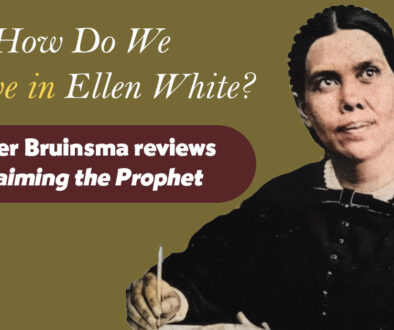The Management Guru and the “Brethren”
by Lawrence Downing
By Lawrence Downing, October 17, 2013
I read with interest that management guru Gary Hamel has been invited by General Conference leadership to assist them and other church administrators strategic planning. This invitation brought to mind another occasion when Neal C. Wilson, then president of the General Conference, invited another management guru, Prof. Paul Cone, Ph.D., to evaluate the GC management process and offer his suggestions.
After extensive evaluation and interviews with personnel on all levels of the organization, Paul submitted his findings to President Wilson. His conclusions and recommendations included the following:
Leadership Skills: Administrators must develop and exercise the following skills: Conceptual, Analytical, Human, Management of the Conversion and Transformation Process.*
“Executive skills,” he continued, “are applied primarily to the strategic planning function where effectiveness is dependent upon: Scanning and forecasting the external environment, finding opportunities to serve (services and markets), and adapting to threats and constraints. Resource allocations which promote the mission, priorities and performance. A cohesive organization system and structures which provide synergism. Good representation and satisfaction of constituencies (good communication and performance.) A demanding but fair performance evaluation system (including independent audit). Administrative climate for growth and innovation. The human resource is the only resource which can become more valuable over time—leaders provide the climate for growth, innovation, and performance. A reputation for and an example of fairness and commitment.”
In another section, Dr. Cone addressed organizational structure.
“Changes in the environment demand changes in strategy and the organization structure. We need to mold the church into a system which is best suited to the environment. We need to study, besides Scripture and theology, management and organization which meet the needs of our environment. To be effective in a turbulent environment requires identifying the mission, organization structure change, programs which relate to specific environments, good methods and sound resource deployment.
“Every organization must not only adapt to environment change but seek renewal. All organizations go through life cycle stages and reach a declining stage unless changes (primarily leadership and organization) occur to generate renewal.”
“Although the chief aim of the church is spiritual in nature, it is God’s church—not the administrators. Church leaders are too often content with ‘business as usual’ or even superficial work. Instead of building organizations to grow, most church leaders patch up weak points, fight fires when they break out and drift in to ‘paths of least resistance.” Sincerity or praying is not enogh. Most churches wast an incredible amount of resources, especially human resources (paid and volunteer,) time (especially in committee meetings), and ineffective effort (poor or no priorities.)
Addressing the church organization levels, Prof. Cone wrote, “The administrative home for the local church should be the local conference—this might be likened to the territorial division….Functional staff should be located here—not at the region nor at headquarters.”
In addressing the matter of denominational headquarters, Paul observed, “This is the legal corporation for the denomination where top leaders serve. Their function is primarily strategic planning, but not operating. Operating administration should be left to the local conference. Functional staff should be very lean and service the needs of headquarter leaders—not the field.”
Paul’s recommendations related to the Office of the President included the following: This office “…will contain the president who will be in charge of strategic planning for the denomination, along with two or more regional vice presidents who will be responsible for liaison with the regions. This way the president’s span of control will be reduced to a workable number.
It is recommended that a Strategic Planning Committee (which is really a permanent task force…) be chaired by the president. Those on the committee should be line personnel—the regional vice presidents. This satisfies the requirement that the people who will be implementing should be involved in saying exactly what that plan should be….The purpose of this committee is to keep the work of the church coordinated and integrate, monitor performance, and make any necessary adjustments to plan or performance.”
Addressing the operational functions of the church organization, Paul made these recommendations: “The same person should never be the president and the chairman of the board, unless it is a family-owned company. Open communication in board meetings is hindered when the president is the chairman, because he is the leader of about half of the board members (in the case of the current structure, the chairman is leader for most of the board members.) When the board chairman and the chief executive (president in this case) are one and the same, it confuses two different jobs and weakens the role of its directors.”
The report contained significant other recommendations and observations that Dr. Cone presented to President Wilson and the GC committee. At the conclusion of his presentation, Paul reported the following response: “At the end, the denomination’s president stood and expressed appreciation but said, ‘You are from the corporate world, and you don’t understand that your ideas will not work in a church.’ End of conversation and of any prospect for constructive change.”
Here’s the question: Will Mr. Hamel’s presentation and the response from the GC administration be de je vue all over again? Time will tell.
*The quoted material comes from a 1998 Ministry magazine article co-authored by Downing and Dr. Cone.



